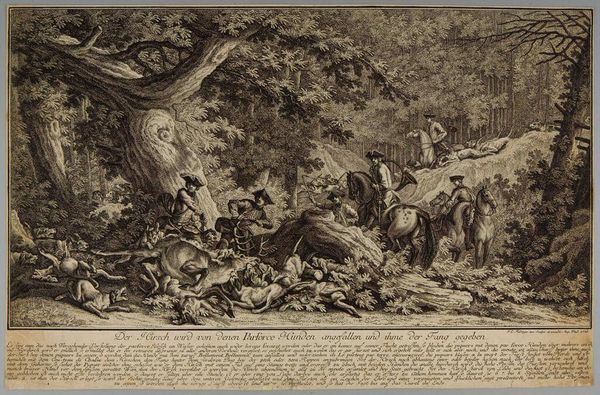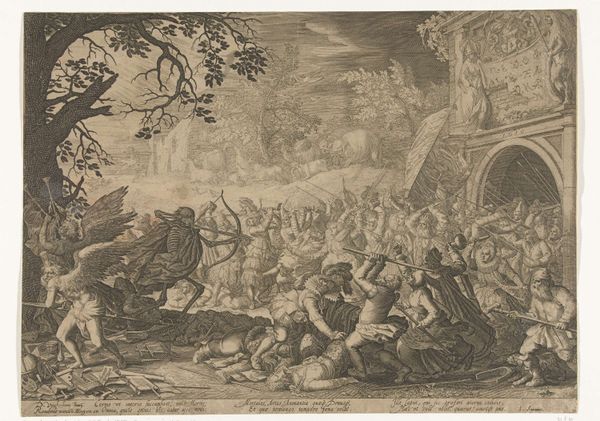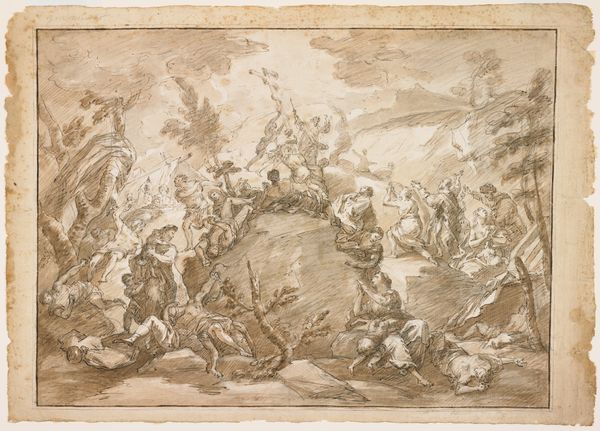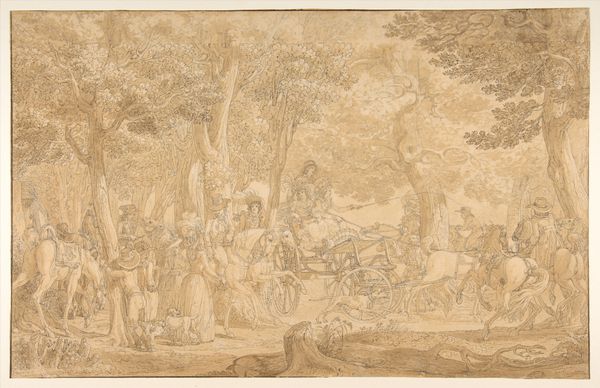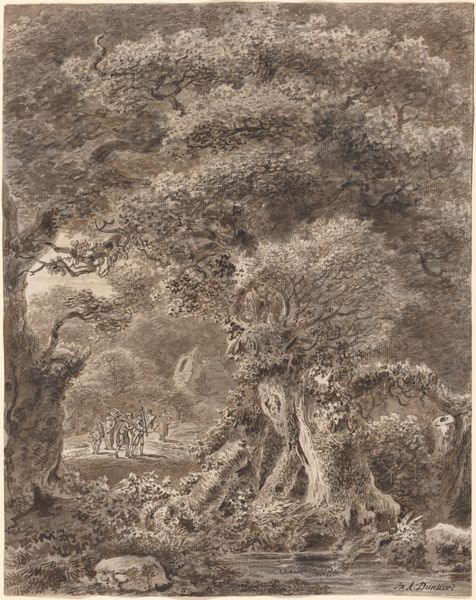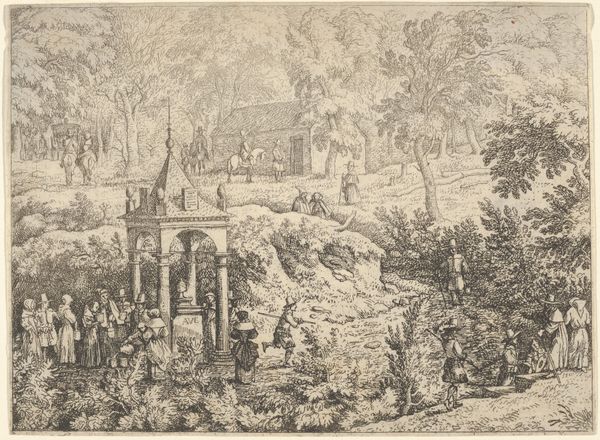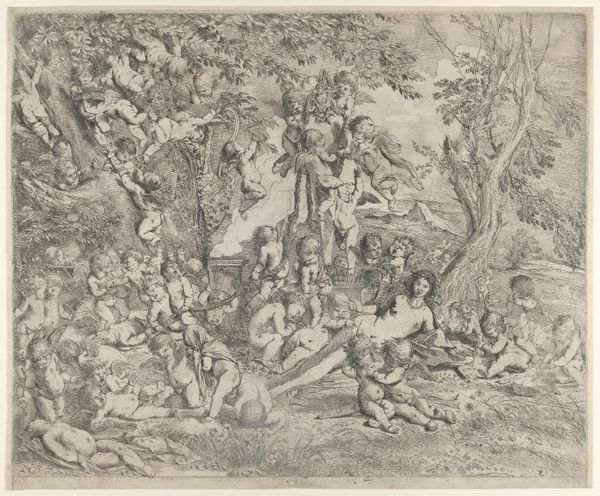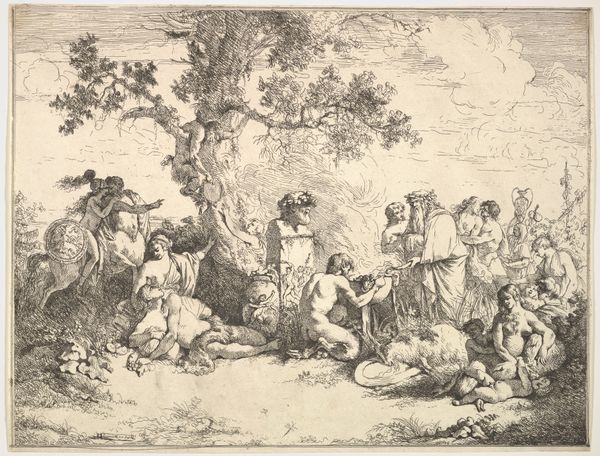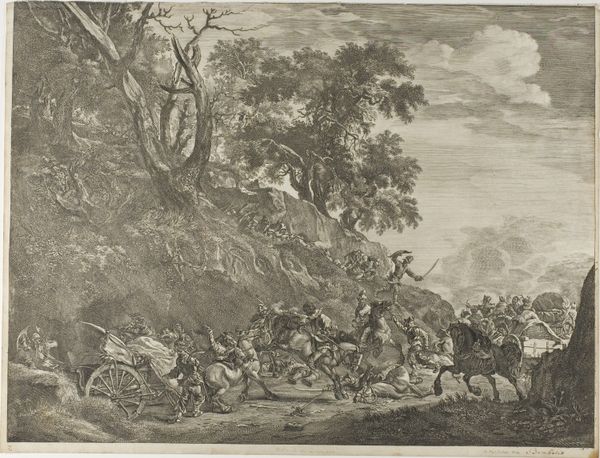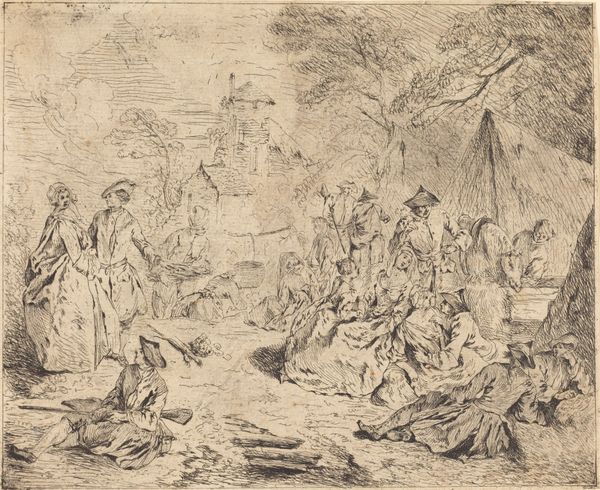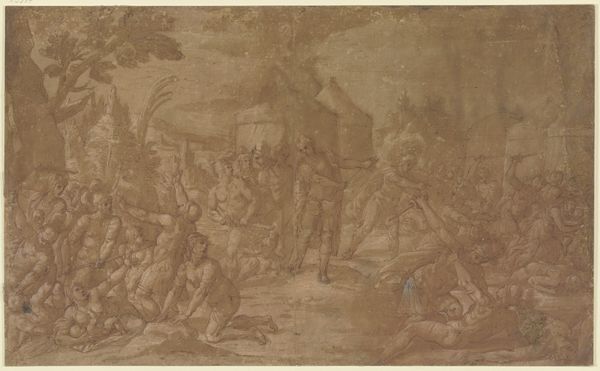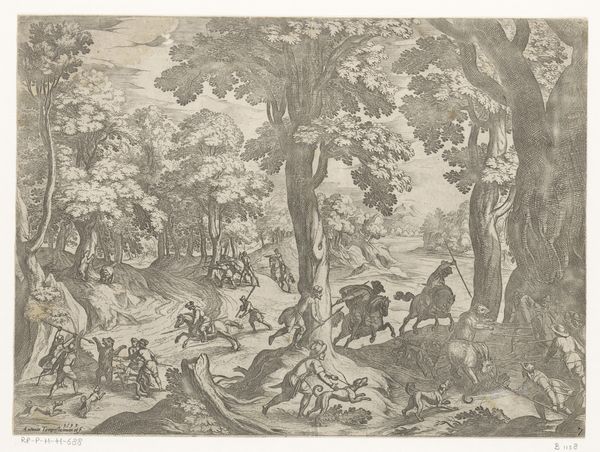
Dimensions: 16 1/2 x 25 11/16 in. (41.91 x 65.25 cm) (sheet)
Copyright: Public Domain
Paul Gregoire made this pen and wash drawing of a Bacchanal with a Statue of Ceres sometime around the turn of the nineteenth century. We see a riotous scene of revelry in the woods, with mythological figures devoted to the Roman god of agriculture, Ceres, engaged in various states of undress and intoxication. This drawing reflects a Neoclassical interest in depicting ancient Roman life, but with a twist. It romanticizes these bacchanals, hinting at a critique of the strict social codes of the time. Gregoire seems to be saying that in a time of revolution, the old codes don’t apply. What does it mean to idealize this pagan scene in post-revolutionary France? Does it signal a kind of moral liberation? Is it a rejection of religious authority? What can historical documents like personal letters and political pamphlets tell us about the role of drawings like these in the French Revolution? Art is contingent on the social conditions of its time and place, and it invites us to ask new questions.
Comments
minneapolisinstituteofart almost 2 years ago
⋮
Followers of Bacchus, god of wine and the harvest, celebrated his feast day on September 3. Bacchanals were rowdy, drunken gatherings, often held illicitly in the forest or other wilderness locales. In front of the statue of Ceres, Roman goddess of agriculture, one celebrant commits the ultimate party foul: after consuming one too many, she has fallen to the ground and smashed a large vessel of wine. Meanwhile, her slightly more sober companions—many of them goat-like satyrs—dance, sing, and play instruments. Several carry pan pipes, flutes, cymbals, triangles, and drums.
Join the conversation
Join millions of artists and users on Artera today and experience the ultimate creative platform.
